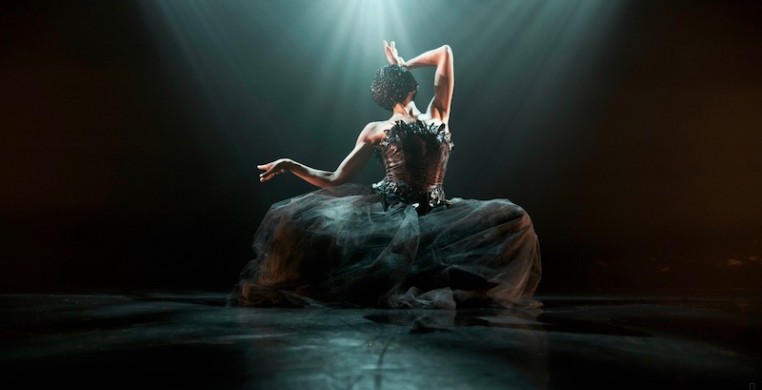Chicago had cast its spell on dancer/choreographer Nejla Yatkin long before “The Other Witch” called out to her imagination. Connections that gave birth to Yatkin’s newest multi-media, multi-lingual creation transcend international and historical boundaries, from World War I Germany to a remote village in East Anatolia, Turkey, to 20th-century Berlin and ultimately to its realization in Chicago.
“I am not reconstructing Mary Wigman’s work,” Yatkin explained in a recent phone conversation. Referring to the modern dance pioneer’s signature solo, “Hexentanz (The Witch),” she found herself captivated by the whole idea of “the other” as embodied in the history of shamanism and witchcraft, which fueled much of Wigman’s revolutionary vision as a feminist artist in early 20th-century Germany.
Yatkin identifies with Wigman’s expressionist ideology “as someone always being ‘other,’” she said, “not really having a place where I feel like I belong.”
The journey of “The Other Witch” to Chicago really begins with Yatkin’s parents, who immigrated to Berlin from East Anatolia, Turkey, where tribal communities lived semi-nomadic lives in isolated villages. Her mother had no schooling and her father only through the fifth grade. Berlin, a cultural island between two opposing political ideologies on the brink of war, needed to attract outside labor to work in its factories. Nejla's parents answered the call and relocated for what they expected to be a temporary stay. Instead, they remained, but found themselves socially isolated in a liberal and culturally progressive city.
Nejla, who was born in Berlin, had access to free education, including the arts, with exposure to ideas and expectations that clashed with her parents’ traditions. “Cultural programs were free in Berlin. There was lots of diversity, many workers from outside Germany, student protests, more radical thinking.” She kept family life and school in two separate worlds.
Yatkin’s Chicago connection began with Nana Shineflug, founding artistic director of The Chicago Moving Company, whose Berlin residency offered exposure to Shineflug’s chakra system, Butoh and other dance idioms. The connection was transformative for Yatkin, and Shineflug urged her to consider coming to the U.S. to dance. That led to dancing with the Cleo Parker Robinson Company (Denver) and the Dayton Contemporary Dance Company, and her subsequent move to Chicago.
Yatkin first became intrigued by the political and artistic background surrounding the creation of “Hexentanz” (“The Witch”), while attending the celebration of the 100th anniversary of the birth of choreographer Mary Wigman.
The political environments in which the three distinct versions of “Hexentanz” were performed are reflected in the evolution of the piece through history. Germany was a constitutional monarchy when the piece premiered in 1914 at an artists’ colony in the Swiss Alps. It featured bare legs, free, open movement and a “da-da-ist” reflection of nature.
In its 1926 iteration, Germany was under the Weimar Republic and between two wars. Constrained movement and a Noh mask reflected minimalist Japanese influence of the Noh Drama. The piece took on its present form in 1934, when the Fascist Third Reich was in power.
In similar response to today's political and social climate, “The Other Witch” seeks to highlight how “as an individual, you can change your behavior and fight institutional inequalities.” Modeling her convictions through her work, Yatkin said she performs “anywhere I can: in prisons, gallery spaces, in water. You create the possibilities for yourself instead of waiting for an institution to make that for you.”
Yatkin has been working on “The Other Witch” since January, 2019. She described the work as “a feminist creation, stripped away of the fundamental influences of this time.” The origin of witches and witchcraft derives from primitive shamanistic practices where the witches would “embody the fears and anxieties of their world through dance, song, and ritual, transforming and diffusing the angst and fears of the community.”
Yatkin said she hopes that people will come “and meditate with me on the current challenges of the time. How do we collectively tackle these unknowns in a kinder way, talking—not over, but with each other—to bring people together?”
--
Presented by the Dance Center of Columbia College Chicago, “The Other Witch” will be livestreamed as three parts on Oct. 23 and 29, and Nov. 6th. A moderated discussion with the choreographer and special guests follows each segment. A $20 donation to the Dance Center includes tickets to all three screenings (in addtion to other presenting season events) available by clicking the event page below.



